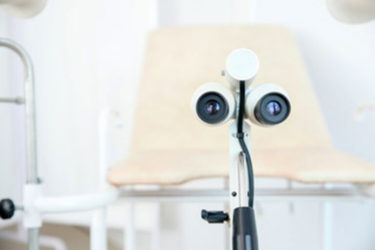HPV Diagnosis, Now What?

Although 4 out of 5 people will contract the human papillomavirus (HPV) in their lives, receiving a positive test for it can still be surprising. Most cases go away on their own, but some types can cause genital warts and cancers. The good news is that knowing you have an HPV diagnosis means you can do something about it. Here’s what to expect after.

Colposcopy: A Closer Look
Having HPV doesn’t mean you have definitely have cancer; it means you are at higher risk than someone without HPV. After diagnosis, your doctor will need to get a closer look at your cervix and areas with abnormal cells. A colposcopy is a procedure that uses a magnifying device with a light to examine these areas that the naked eye cannot see.

A biopsy may be taken to get an even closer look under a microscope if there are areas of concern. Depending on what they find and the severity of the abnormalities, your doctor may:
- Recommend waiting to see if the cells heal themselves. In the meantime, you will have another pap smear or other test to watch the cells.
- Remove all abnormal cells during the biopsy, and further treatment isn’t necessary.
- Give you a referral or recommend further treatment.
In addition, you should talk to your partner about getting tested and practicing safer sex to avoid spreading HPV if they don’t have it.
Removing Abnormal and Pre-Cancerous Cells
If the abnormal cells found are considered pre-cancerous or are at high risk for being pre-cancerous, removing them will help prevent cervical cancer. Here are four very effective procedures:
- Cryotherapy – Freezes abnormal cells off.
- Loop electrosurgical excision procedure (LEEP) – A thin wire loop that carries an electrical current removes the abnormal cells.
- Laser – A particular type of laser is used to remove abnormal cells.
- Cone biopsy – A cone-shaped wedge is cut out of your cervix to remove the abnormal cells.
Cancer and Other Treatments
Cervical cancer is very treatable, especially when it’s caught early. If your cells show signs of cancer, your doctor will refer you to a gynecologic oncologist. They specialize in treating cervical cancers and will determine the extent of the disease. From there, they will talk to you about cervical cancer treatment options such as chemotherapy, surgical, and radiation therapy.
Contracting the virus through skin-to-skin sexual contact can also result in genital warts or lesions on your tongue, tonsils, soft palate, larynx, or nose. Depending on the type, prescription treatments are available to help provide relief.

Having HPV means you have the power to help yourself. But did you know being HPV positive can also help improve how we diagnose, treat, and prevent it too? As a clinical research volunteer, you can play a unique role in a better future with HPV. Explore our enrolling studies for individuals with an abnormal pap smear result and those living with HPV today! Call Wake Research at (919) 781-2514 or visit our enrolling studies webpage.
Sources:


